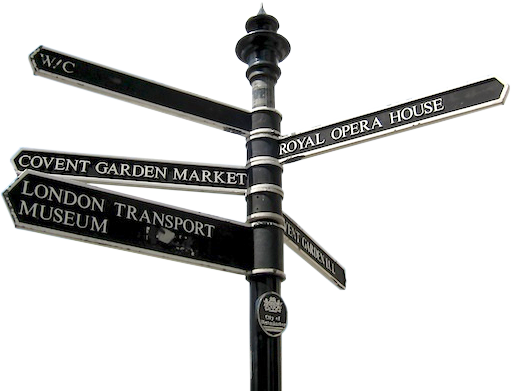History of Covent Garden
Covent Garden – a History…
Before the 17th Century
Covent Garden is an ancient part of England’s capital outside the original walled City of London, Roman ‘Londinium’. From Saxon times people lived and traded here between the river and what is now Seven Dials. This settlement of ‘Ludenwic’ thrived from the 6th century until Londinium was revived in the late 9th century. It then reverted to mainly pasture.
The area’s name comes from the ‘convent garden’ cultivated here in the Middle Ages by the monks of the Abbey of Westminster, who sold their surplus crops on the site. By the 14th century, the capital was expanding, with an increased demand for food. People began to bring their own produce to sell, creating the first idea of a market here.
Great houses were built along the river and the Strand, their supplies coming up the Thames. More modest dwellings began to appear across the meadows to the north, including those of people servicing the bishops and aristocracy.
The Abbey’s property was surrendered to Henry VIII upon its dissolution in 1539. By 1552 the former convent garden and its surrounding lands had come into the hands of John Russell, later first Earl of Bedford, via the Crown. These 47 acres comprise the southern part of modern Covent Garden, being most of the land from the Strand northwards to Long Acre. The Earl built a grand home, Bedford House, but allowed a small market to grow outside its walls on the south side of what is now the Piazza.
17th – 19th Centuries

The third Earl of Bedford built along Long Acre around 1615, but the fourth Earl was more ambitious. He conceived what was arguably the first exercise in large-scale urban planning in Britain since the Romans. In 1630, he commissioned Inigo Jones, Surveyor of the King’s Works under Charles I, to enhance his estate. A central Piazza was built with colonnades and stately town houses and, across 20 acres, new streets were added in a complementary style. Inspired by his travels in Italy, Jones introduced the idea of a uniform, elegant square which would set the pattern for much of London’s West End.
Courtiers, the gentry, and successful men moved into the fashionable residences. The parish of St Paul’s was created for them in 1646, with its new church (‘the finest barn in London’) positioned like a temple in a Roman forum. Cottages standing in the way were demolished and the poorer classes moved on. And so began what are now four centuries of competing property development interests, over these 100 or so acres of prime land that are home to the Covent Garden community.
In 1665 and 1666, scores of Londoners fled the plague and the Great Fire which destroyed the City of London, migrating to the untouched West End and Covent Garden. Consequently the small market practically exploded with activity and, in a bid to regulate its rapid spread, Charles II granted a royal charter in 1670 to formalise its presence. This rapid expansion changed the character of the area. In addition to the market the two new theatres on Bow Street and Drury Lane drew a dissolute crowd of pleasure seekers, attracting a flourishing trade in prostitution. The aristocracy moved on and as they did so, more and more of the working class moved in. Seven Dials in the west of Covent Garden and the nearby St Giles rookery plunged into poverty and dilapidation. By the end of the 18th century , opportunists swooped in, converting the vacated aristocratic homes into taverns, coffee houses, gambling and dens and. of course, brothels.
By 1830 Covent Garden was reorganised with the erection of the Central Market and it would live on for almost two more centuries. It became a market proper attracting not just market gardeners but traders importing fruit, vegetables and flowers from overseas. Many of the buildings throughout the entire area were dedicated to the market as warehouses, box manufacturers and the like. Huge brewery buildings dominated the south of Covent Garden and the whole area teemed with industries and craftsmen big and small.
20th Century to today
As the market grew bigger and more popular it became more overcrowded and congested. Its access points were narrow, unfitted for the many carts, drays and then lorries and vans that delivered and collected produce ‘every day but Christmas Day’. It became more apparent that it would have to be moved. In 1961 the Covent Garden Market Bill was passed. By 1974, the Market had been moved in its entirety across the river to Nine Elms.
The Central Market building, the warehouses, ancillary trades, porters’ cafes and all-night pubs were deserted. Comprehensive redevelopment plans were drawn up – plans which overlooked the people who lived in the area. Read about the ten-year battle fiercely fought by the community in the History of the CGCA.









